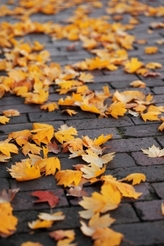
Do you know how I know? The symptoms that you all are coming in with!
Spring is the season associated with the Liver, in Chinese Medicine. The Liver, when it's out of balance, shows particular symptoms. Have you been experiencing any of these?
- Allergies, especially eye symptoms
- Worsening or flaring of Eczema symptoms
- Irritability/Easily frustrated
- Increased sense of stress or overwhelm
- Worsening of pain symptoms - particularly those with an immune component
- Trouble sleeping, especially if you're waking between 1am-3am
- In folks who menstruate - increased PMS, clotting, cramping, and a general "That was a weird one!" sense of your cycle
- In perimenopausal folks - temporarily worsening of your hotflash/nightsweats situation
The Liver is associated with the element of Wood. Just like the trees budding, bulbs popping up out of the ground, and grass growing crazy fast, our energy is ready to emerge for the season! Winter time is a time to rest and repair and rebuild. Spring is a time to emerge, grow and expand. Many of us are experiencing worsened symptoms because the weather hasn't been cooperating with our energetic and mental desires to start moving, growing and changing!
In order to help ease your Livery symptoms, consider trying some of these tactics!
- MOVE! - Go for a walk or a run, do some yoga, Tai Chi or Qi Gong. Just be gentle with your first few outings. It's really easy to injure your tendons and ligaments (also associated with the Liver!) after being more stationary for the season.
- Eat sour things! - The sour flavor is associated with the Liver - citrus of all types, but also many fresh fruits and berries can help move your stuck Qi
- Green things! - Green is the color associated with the Liver - Eat leafy greens of all sorts, wear green, paint your nails green, green green green!
- This one is my personal favorite - Garden - Getting your hands dirty while hanging out in the dirt and plant life and getting a bit of exercise can really break up the stuckness that you might be feeling!
- Of course, acupuncture is a FANTASTIC tool for getting our energy moving as well!
- If your body is being PARTICULARLY stubborn, an appropriate Chinese herbal formula might be needed
Until Next Time! <3 Becca


